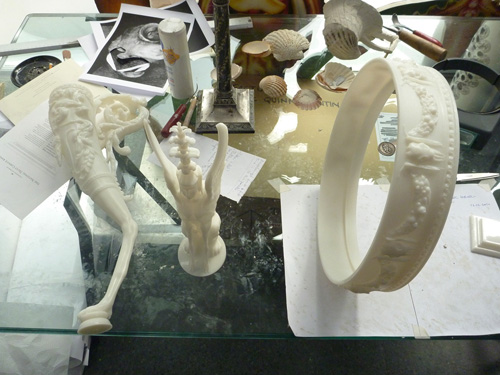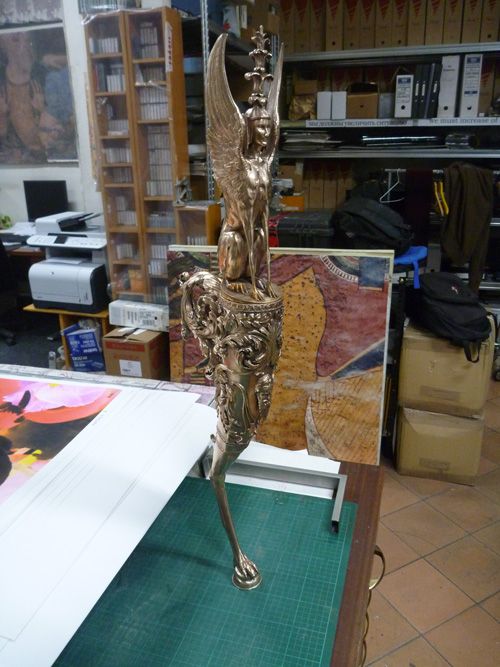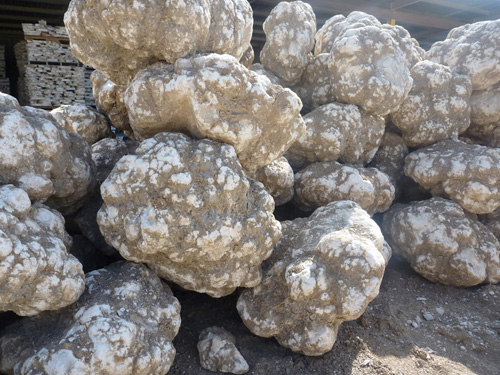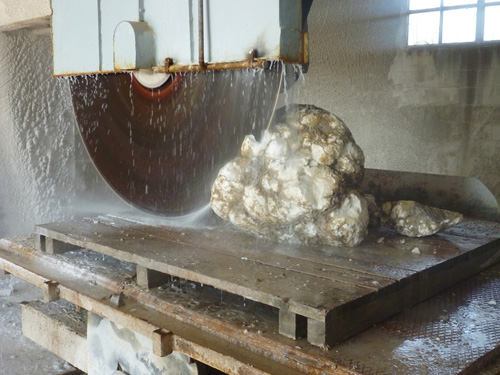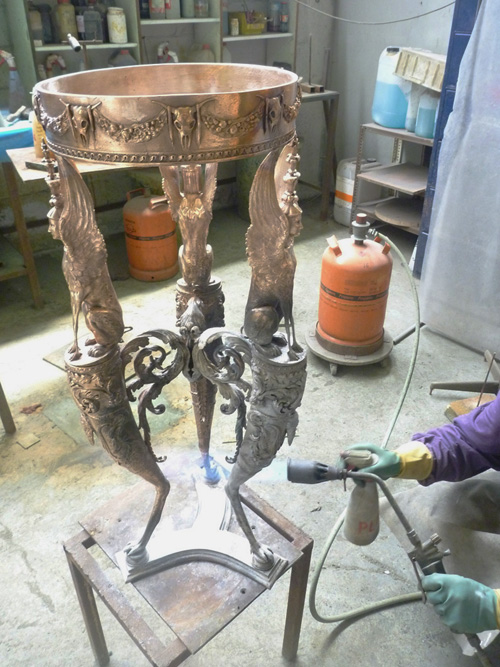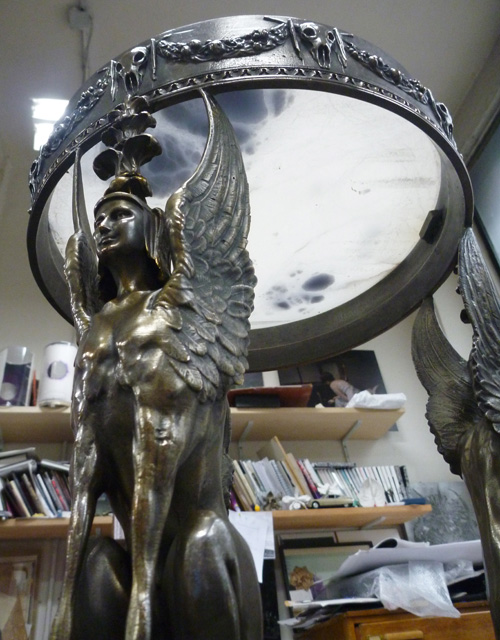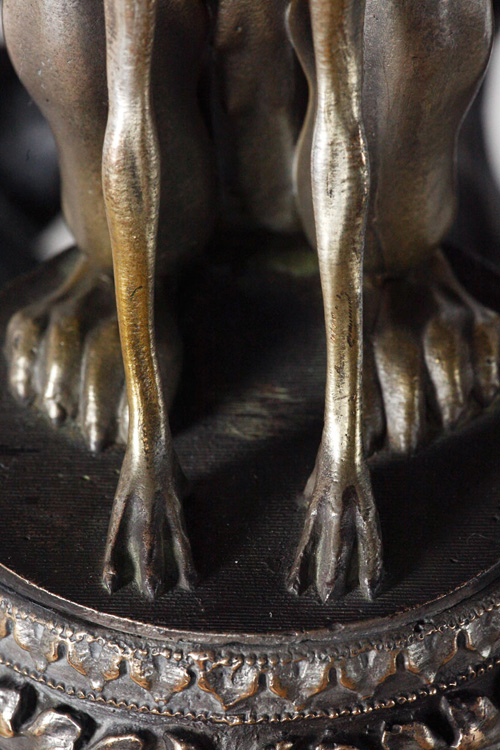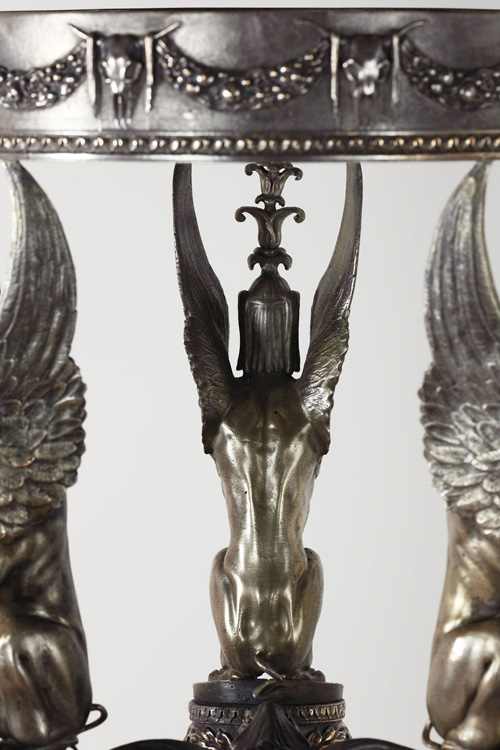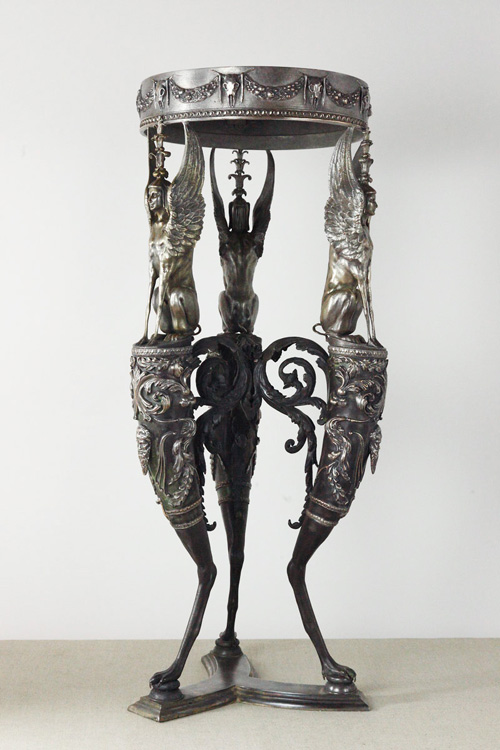This tripod is one of the objects being produced in 3D from Piranesi's designs.
A preview of the rotating 3D model corresponding to the tripod above (work in progress).
Comparison of the 3D model and a first prototype. The 3D virtual version of one of Piranesi's etchings is shown here as a STL file (left) and produced by voxelstudios, Madrid, after which it has been prototyped by Materialise (right) based in Belgium . The process used to build this prototype from a STL file is called sterolithography, the tripod was divided into sections and then each part is built slice by slice from bottom to top, in a vessel of liquid polymer that hardens when struck by a laser beam. The prototype surface is then reworked by hand in order to add the more intricate details and after which a silicon mould is made from which the tripod shall be cast subsequently.
A wax positive of the foot of the Isis Tripod - part of the process of lost wax casting. The foundry work is being carried out at Fademesa, Madrid.
A wax positive of the leg of the Isis Tripod - part of the process of lost wax casting.
A wax positive of the 3 sphinxs from the Isis Tripod - part of the process of lost wax casting.
The prototype leg section of the Isis Tripod, cast in bronze in the Fademesa foundry in Madrid. Selecting a ball of Alabaster from Antonio Soro's quarry in Fuentes del Ebro. This Alabaster will be used as the top part of the Piranesi Tripod. Cutting the Alabaster. Section of Alabaster.
Sanding the alabaster top in a basin of water.
Comparing the resin prototyped leg of the tripod to the newly cast bronze legs. Welding the inner side of the legs together in the foundry, Fademesa. Blow torching the bronze creates chemical reaction which adds a patina to the surface. Adam Lowe experimenting with different chemicals to further develop the patina.
The adding the cut and polished slab of alabaster which forms the table top of the tripod.
The tripod after it's patina has been adjusted.
|



